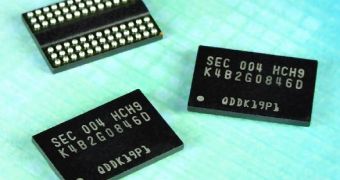One would think that price cuts would qualify as a news in any market, and most often they do, but the DRAM segment, unfortunately, can be said to have reached a point where price declines are to be expected.
Normally, every segment of the industry goes through phases of rising and falling prices, depending on how demand and supply fluctuate.
Then again, the situation sometimes stays flat and, in ever rarer cases, holds to a trend for so long that the 'norm' becomes something else altogether.
The DRAM market can easily be said to qualify as the latter type, after so many months where it has remained more or less unchanged in its supply and demand evolution.
Of course, evolution might not be the correct word, since what DRAM prices have been suffering from can more closely be dubbed decline.
For a long time now, demand has been so slow and supply so large, comparatively speaking, that prices have been falling and falling without much hope for anything else.
Repeatedly, manufacturers tried to force the trend to stop, but they kept on letting DRAM chips and, by extension, modules sell for less and less.
This is exactly what Digitimes is once again forced to report, mainly due to how PC OEMs still aren't very eager to place orders.
2 GB and 4 GB DDR3 modules had an average price of US$12.25 and US$23.50, respectively, in early August (15.5% and 16.1% down).
The fact that chip suppliers lost all their bargaining power as inventory pressure increased definitely did not help their plight.
Now, everyone involved has to prepare for the fact that the situation may persist until next year.
Consumers would no doubt have reason for anything but to rejoice, but the simple fact is that the existence of the problem is sheer proof of them not exhibiting the demand others would like to see.

 14 DAY TRIAL //
14 DAY TRIAL //